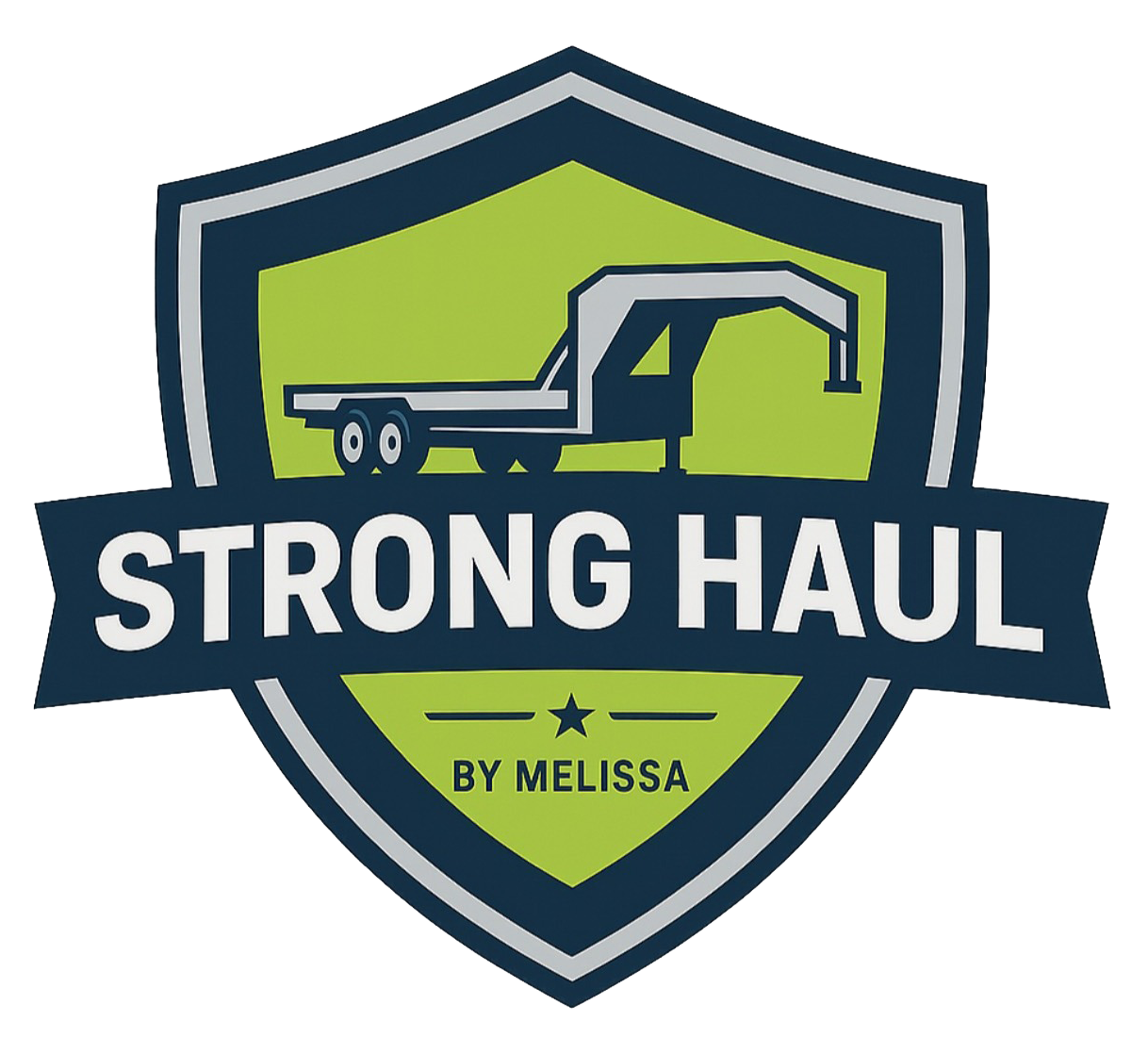BLOGS
CDL vs. Non-CDL Gooseneck Trailers: The Real Difference and Why It Matters
By Melissa Vera | Strong Haul by Melissa
When it comes to hauling — especially in the hotshot or commercial transport world — the words “CDL” and “non-CDL” get thrown around constantly. But a lot of people don’t really understand what that means when it comes to trailers, trucks, licensing, and business goals. If you’re looking to buy a gooseneck trailer, understanding the difference between CDL and non-CDL setups will keep you legal, efficient, and ready to grow your business the right way. Let’s break it all down — numbers, rules, setups, and real-world differences.
What Does CDL Actually Mean?
CDL stands for Commercial Driver’s License. It’s a special class of license required for drivers operating heavier or more complex vehicles. In the hauling world, the key number to remember is 26,001 lbs. That number represents the combined gross vehicle weight rating (GVWR) of your truck + trailer together. If the combined GVWR is 26,001 lbs or more, you legally need a Class A CDL license to drive it.
GVWR: The Number That Decides It All
Example 1 (CDL Required):
- Truck GVWR: 14,000 lbs
- Trailer GVWR: 14,000 lbs
- Combined GVWR: 28,000 lbs → CDL required
Example 2 (Non-CDL):
- Truck GVWR: 10,000 lbs
- Trailer GVWR: 16,000 lbs
- Combined GVWR: 26,000 lbs → Non-CDL legal setup
CDL Gooseneck Trailers — The Heavy-Hitters
CDL trailers are designed for heavy commercial work
Typical specs include:
- Dual tandem axles (10K–12K each)
- GVWR 22K–30K+
- Oil-bath hubs and heavier I-beam frames
- 35+5, 40’, or 45’ deck lengths
- Built for dually diesel trucks
Ideal for hauling:
- Heavy machinery
- Oilfield and construction loads
- Multiple commercial deliveries
These trailers handle more payload but require a CDL, higher insurance, and DOT registration.
Non-CDL Gooseneck Trailers — The Smart Starters
Non-CDL trailers keep you under the 26,000-lb limit but still let you haul strong.
Typical specs:
- Tandem axles (7K–8K each)
- GVWR around 14K–16K
- Shorter decks (25+5, 30’, etc.)
- Perfect for ¾-ton or 1-ton pickups
Ideal for:
- Hotshot beginners
- Ranchers and small business owners
- Contractors and landscapers
You can safely haul up to about 10K–12K lbs of payload without needing a CDL.
Legal and Business Implications
Non-CDL setups are simpler to start, cheaper to insure, and easier to maintain. CDL setups unlock higher-paying loads but come with more regulation.
Summary Table:
Non-CDL: ≤26,000 lbs, regular license, lower costs, no DOT number.
CDL: ≥26,001 lbs, Class A CDL required, DOT compliance, higher insurance, medical card.
Safety and Maintenance Differences
CDL trailers feature:
- Heavier suspension and braking systems
- Oil-bath hubs for endurance
- Torque-rated frames and stronger jacks
Non-CDL trailers save on fuel and wear but require smart loading and balance.
Which One Should You Choose?
If you’re starting out, hauling lighter loads, or want flexibility — go Non-CDL.
If you’re scaling up, hauling big equipment, or crossing states — go CDL.
The Strong Haul Perspective
At Strong Haul by Melissa, we match every customer with the right trailer, CDL or not. We’ll break down GVWR, licensing, and financing options so you’re confident and compliant before you hit the road.
👉 Browse our latest inventory here: www.stronghaultrailers.com
👉 Call or text Melissa today at 713-281-6703
Strong Deals. Strong Service. Strong Haul.
